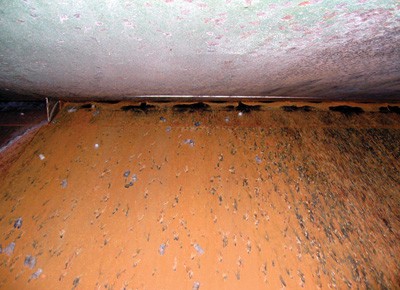 As with anything else in life, the ability to make an informed decision is based on the quality of the information you receive. The purpose of this article is to explore some of the claims associated with using water on steel funnel traps.
As with anything else in life, the ability to make an informed decision is based on the quality of the information you receive. The purpose of this article is to explore some of the claims associated with using water on steel funnel traps.
This information represents the opinions of Action Target based on the experience and observations of our range consultants and engineers. We encourage you to conduct your own research and speak with other users about their experiences with the various bullet trap technologies presented before drawing your own conclusions.
CLAIM #1: You can use any type of ammunition on a wet steel trap.
It has been reported that frangible ammunition may cause problems with wet funnel traps because the powder created by certain types of disintegrating bullets can mix with the water and harden into a cement-like substance resulting in an extremely difficult cleaning process.
CLAIM #2: Wet steel traps eliminate lead dust on your range.
If a bullet strikes an area on a wet steel trap where the water and oil mixture is flowing (like on the bottom plates), the amount of lead dust generated at the trap on initial impact may be reduced. But if the bullet hits on the upper plates where no water is present, lead dust can be generated much the same as on a trap where no water system is in use. Also, lead dust containment systems such as water are meant to deal with lead on the bullet trap itself. They typically have little or nothing to do with emissions at the firing line or other areas of the range.
CLAIM #3: Wet steel traps capture all pullets whole and eliminate splatter and ricochet.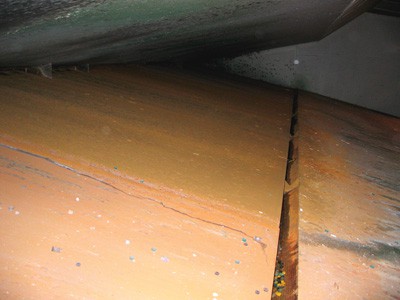
The gently sloping angles of steel funnel plates do help prevent bullet breakup on initial impact, but bullets can also fragment into small pieces once they enter the rear chamber and strike more steel surfaces inside. Also, many designs include a vertical edge at every seam where two chambers meet and are attached to each other. Deflectors are typically used to protect these vertical edges, and bullets can fragment more significantly if they strike these deflectors. Our observations would indicate that the degree of bullet fragmentation is mostly related to the velocity of the bullet. Slower pistol rounds may be able to be captured more whole when using a primary decelerant or lubricant such as water, but faster rifle rounds tend to disintegrate whether the water is present or not.
CLAIM #4: Wet steel traps are more environmentally friendly.
A doctor’s first and fundamental responsibility is to do no harm and to not make a difficult situation worse than it already may be. The same can be said for a bullet trap. Because lead disposal is already difficult enough for most shooting ranges, the last thing we thing a bullet trap should do is to complicate the matter by mixing the lead with other substances such as water, oil, chlorine, or antifreeze.
CLAIM #5: Wet steel traps function equally well indoors and outdoors.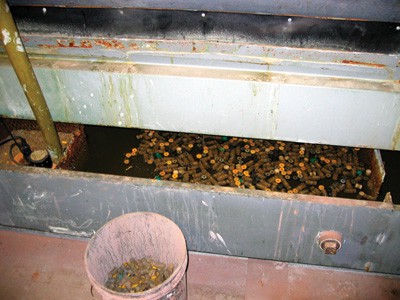
Referring back to claim #4, it can be much more difficult to contain all potential contaminants generated by a wet steel trap on an outdoor range. Rain, snow, ice, wildlife, leaves, twigs, and other clogging debris can complicate matters when operating outdoors.
CLAIM #6: One piece welded funnel plates are better than modular funnel plates.
If everything is welded together on site, you can end up with a bullet trap that is much more difficult to service or repair should anything go wrong. Long, continuous sheets of plate steel can be more prone to stress fractures and cracking than shorter, modular plates. That is one reason why bridges and overpasses are often formed by bolting together multiple modular pieces. When modular funnel plates and joint systems are properly designed, you get a strong and maintenance-friendly bullet trap that requires no sacrifice of safety or performance.
CLAIM #7: Funnel plates mounted at a 12 or 13 degree angle function significantly better than funnel plates mounted at a 15 degree angle.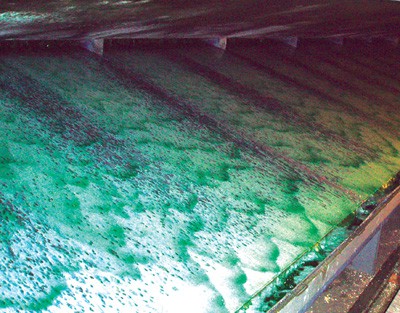
If a 12 or 13 degree slope is better than a 15 degree slope, then isn’t 11 better than 12? Why not drop to 9 degrees? Or 7? Since every degree you go down can increase the cost and the front-to-back size of the trap, there is a point at which you can reach the point of diminishing returns. All other factors being equal (steel hardness, bullet trajectory, etc.), our high speed video tests do not reveal any significant difference between impacts at 12 or 15 degrees. Although it is possible to install an Action Target trap with plates mounted at either 12 or 13 degrees, we believe 15 degrees to be optimal for most uses.
CLAIM #8: A 30-inch diameter in the circular deceleration chamber is better than a 26-inch diameter.
Following the same logic, why not use a 40-inch diameter? Why not 50? Again, it is important to weigh multiple factors such as performance, cost, and space. Action Target believes that the most important thing about a chamber is that it effectively contain rounds, that it have a good service life, and that it can be easily serviced if and when the need arises. We believe our chamber design achieves these values in an optimal way.
CLAIM #9: Wet steel traps don’t require much maintenance.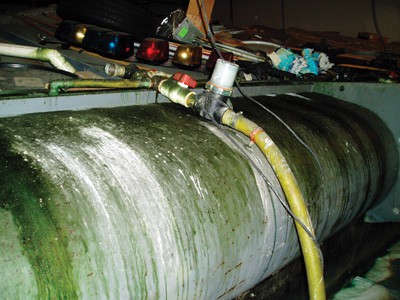
Regular maintenance should be expected with any bullet trap, regardless of the materials used. Just like anything else, range equipment must be properly cared for to keep it working.
The wet steel trap designs we have seen include a water pump, spray nozzle, and filter systems that should be regularly maintained. Potential debris like cardboard, paper, wood, and shotgun wads can certainly be a problem if they are introduced into these systems. Lead should be removed from the collection system and disposed of properly. And we recommend you account for any exposure the lead may have had to water, oil, chlorine, or antifreeze. Water sources should be maintained and you should deal with any potential sources of flooding or leaking. In some cases, an external settling pond or a drainage tank with a waste trap may be needed to keep contaminated water from entering the sewer system. Finally, you should consider any additional effect the potentially higher humidity may have on your ventilation system and any HEPA filters.
NOTE: None of the photos used in this article are of Action Target bullet traps.






